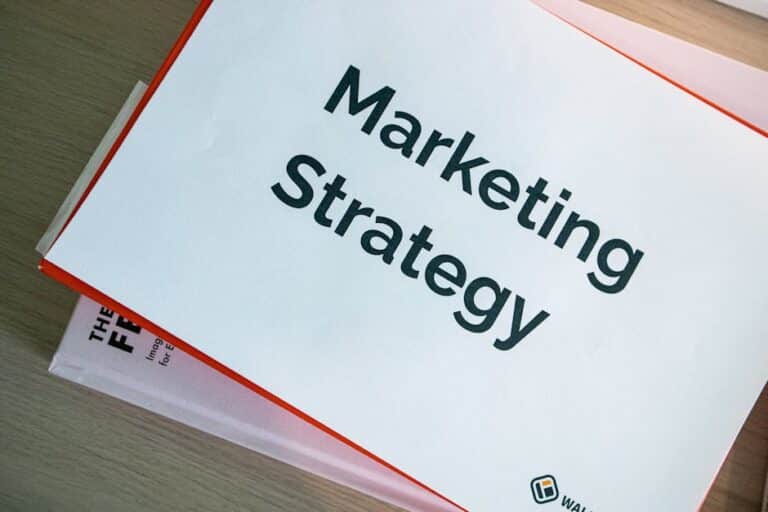Strategic Marketing Services for Small Business: Behind the Curtain of What Really Works

The Small Business Marketing Maze
If you’ve ever Googled “small business marketing services,” you know the drill. Dozens of agencies, consultants, and freelancers all claim they can “scale your business,” “10x your growth,” or “explode your brand visibility.” But when you peel back the buzzwords, it’s hard to tell what you’re actually buying.
That confusion is exactly why so many small business owners feel burned. They’ve invested in social media management, funnels, or ad campaigns, only to find the pieces don’t connect—or worse, they bring in the wrong leads.
The truth? Most small businesses don’t need more deliverables. They need a strategy that ties everything together. That’s where strategic marketing services come in.
What “Strategic Marketing Services” Really Mean
Let’s clear the air. Strategic marketing services are not just about creating more content, designing prettier graphics, or posting to social media. Those are tactics.
Strategy looks at the bigger picture. It asks:
- What do you want your business to achieve in the next 6–12 months?
- Who exactly do you want to reach—and how do they make buying decisions?
- What platforms, funnels, or tools will help you get there without burning you out?
Think of it this way: if tactics are the bricks, strategy is the blueprint. Without the blueprint, you can lay bricks all day and still end up with a crooked wall.
Why Strategy Is Non-Negotiable
A common question small business owners ask is: “Do I really need a strategy if I’m already marketing?”
The answer is yes—because marketing without strategy is motion without direction. You might be running ads, posting daily, or building email lists, but if none of it aligns with your offers and goals, it won’t lead anywhere sustainable.
We’ve seen this countless times. Business owners grind out content calendars and spend money on ads, only to realize their messaging doesn’t match their audience. The result? Low engagement, wasted budget, and a lot of frustration.
Strategy solves that by making sure every post, every ad, and every email has a purpose. It connects the dots between where you are now and where you want to be.
What’s Actually Included in Strategic Marketing Services
Here’s where most small business owners get stuck. They hear “strategy” and think it’s just a document or a call where someone throws ideas at them. Real strategic marketing services are more robust. They include:
- Brand positioning review: Making sure your message clearly communicates what you do and why it matters.
- Offer clarity and pricing strategy: Simplifying your services so clients understand and choose faster.
- Audience segmentation: Breaking down who you serve, how they think, and what they need to hear.
- Funnel mapping: Designing the path that takes strangers to clients, step by step.
- Messaging alignment: Ensuring every channel says the same thing in the same voice.
- Platform recommendations: Choosing where to focus based on ROI, not fear of missing out.
- Analytics setup and tracking: Putting numbers behind your efforts so you know what’s working.
Bonus points if these are all integrated into one system, like GoHighLevel (GHL), where your leads, emails, funnels, and automations can all live together instead of being scattered across half a dozen tools.
Strategy vs. a Marketing Plan
Another point of confusion: what’s the difference between strategy and a marketing plan?
A marketing plan is a list of activities: “We’ll post three times a week on Instagram, run one ad campaign, and send a newsletter.” It’s tactical.
A strategy goes deeper. It asks: Why are you posting? Who are you targeting with ads? What do you want the newsletter to achieve? Strategy defines the priorities, sequencing, and reasoning behind every move.
In other words, a plan is the “what.” Strategy is the “why” and the “how.” Without it, plans become a checklist of busywork.
What Results Really Look Like
So what happens when you get strategy right?
Real small business owners report results like:
- Doubling conversion rates while creating less content.
- Finally knowing what to stop doing, which is often more valuable than adding new tasks.
- Cutting wasted ad spend because campaigns are properly targeted.
- Getting higher-quality leads that actually want what they’re offering.
- Feeling confident enough to delegate marketing tasks because there’s a clear roadmap.
One of our clients went from juggling four different offers to focusing on one. We streamlined her funnel, rewrote her email sequence in her real voice, and aligned her content with what her clients actually searched for. Within three months, her lead quality improved so much that her close rate doubled. She wasn’t working harder—she was working aligned.
How Strategy Supports Pivots
Pivots are inevitable in small business. Maybe you’re launching a new service, shifting niches, or rethinking your pricing structure. Without strategy, pivots can feel like starting from scratch. With strategy, they become smoother transitions.
For example, when one client pivoted from one-on-one coaching to group programs, her strategy included: rewriting her messaging to show the benefits of a group setting, mapping a new funnel that highlighted the program’s transformation, and planning a content series that walked her audience through the “why” behind the shift. Instead of losing clients in confusion, she carried them with her.
Do You Need an Agency or a Consultant?
This is a common sticking point. Agencies often provide full-service implementation, while consultants bring clarity and strategy. But here’s the problem: many agencies don’t provide true strategic alignment. They’ll run your ads or manage your social, but without understanding how it ties to your offers.
That’s why hybrid support is often best. You need someone who can think strategically like a consultant but also roll up their sleeves and help with implementation when needed. That’s the model we use: blending clarity, coaching, and systems like GHL to make sure the plan doesn’t just sit in a Google Doc—it actually gets executed.
Why Past Marketing Didn’t Work
If you’ve already worked with marketers and felt disappointed, you’re not alone. Often the issue wasn’t the person, but the lack of alignment. Maybe the messaging didn’t resonate with your actual audience. Maybe the tactics didn’t match your offer. Or maybe content was created without a funnel to catch leads.
Strategic services fix this by starting with an audit—what’s working, what’s broken, and what’s missing. Instead of tossing out everything, a strategist restructures what you already have, so you’re not wasting effort.
How Long It Takes to See Results
Every business wants to know: how soon will this work? The honest answer is that timelines vary. But when aligned strategy is implemented consistently, most small businesses see meaningful shifts in 30–90 days. Faster if your offer is already clear.
This doesn’t mean overnight success. It means setting a foundation where each week compounds the last. By month three, you’re no longer asking “is this working?”—you’re tracking results you can build on.
Systems That Support Strategy
Here’s the thing: strategy without systems collapses. You can have the best funnel on paper, but if you’re tracking leads on sticky notes, it won’t hold up.
That’s why we recommend tools that support execution:
- GoHighLevel (GHL): to centralize funnels, automations, and analytics.
- Airtable or Notion: to manage content and keep your marketing agile.
- Loom: to create SOPs and train team members as you grow.
The system isn’t the strategy. But without systems, the strategy won’t stick.
Red Flags in Service Providers
Not every consultant or agency will be right for you. Watch out for red flags like:
- No discovery or intake process. If they don’t take time to understand your business, they can’t serve it.
- Cookie-cutter packages that don’t adapt to your needs.
- Buzzwords with no clear deliverables.
- No tracking or reporting system in place.
If a provider can’t explain what they’re doing and why in plain language, that’s your sign to walk away.
What Working with Us Looks Like
At DeBella DeBall Designs, we start with a Clarity Map. That means digging deep into your current offers, client base, and marketing data. We audit your messaging for alignment, map out your funnel, and connect it all back to your buyer journey.
From there, we co-create a 90-day marketing sprint. This includes specific goals, check-in points, and creative support. By the end of those 90 days, you’re not just busy—you’re building momentum.
Final Word: Strategy Is the Simplifier
Strategic marketing isn’t about doing more. It’s about doing better. When your brand, messaging, funnel, and content all align, growth feels less like a grind and more like a plan.
The truth is, most small business owners don’t fail because they’re lazy or unskilled. They fail because they try to do everything without a system. Strategy fixes that. It turns chaos into clarity and effort into results.
If you’re ready to simplify your marketing and finally see consistent growth, now is the time to take action.
Ready to get started? Book a Strategy Session
Explore Coaching with Lisa Benson
Book a Clarity Call
Start with the 9-Line Business Roadmap






